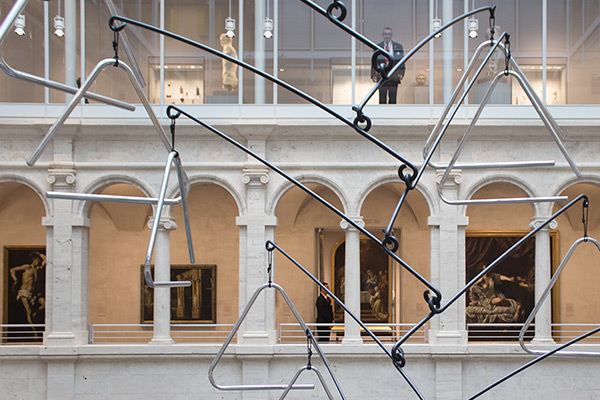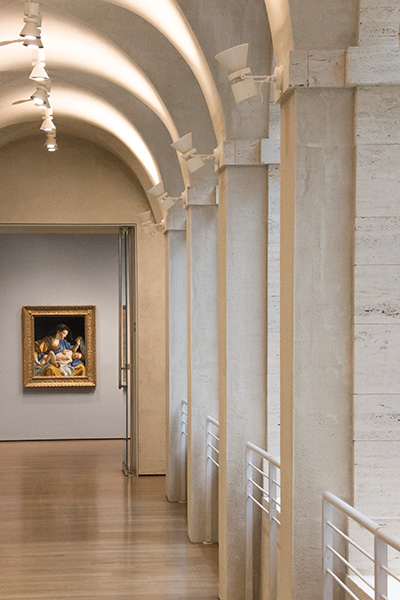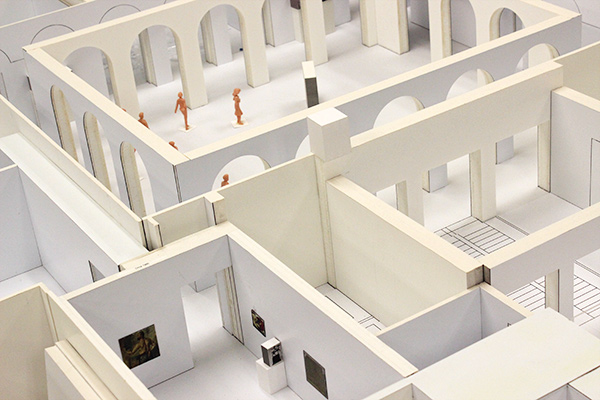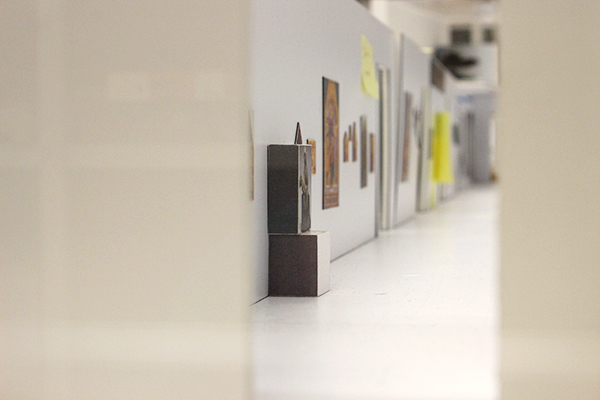This story is part of a series of articles about “museum-speak,” or the lingo of those who work in museums, as well as museum-related knowledge. It is intended to deepen your understanding of the behind-the-scenes workings of a museum, and in particular the operations of the Harvard Art Museums.
There’s an invisible force at work inside the museums. It keeps curators and staff on their toes and visitors circulating around the galleries. It provides visual intrigue as well as continuity throughout the building. It’s the power of sight lines.
Sight lines—the fields of vision extending from any given spot—are essential to the design and layout of galleries and exhibitions at the Harvard Art Museums. Curators, art handlers, and exhibition designers carefully consider visitors’ sight lines as they install works of art; the intention is to ensure that every possible point of view enriches the visitor experience. Sight lines fulfill a number of important purposes, including indicating the subject of a gallery as well as attracting visitors to take a closer look at a work of art.
“Sight lines really matter in terms of getting visitors excited about what they’re going to see,” said A. Cassandra Albinson, the Margaret S. Winthrop Curator of European Art. “Our first job as curators is getting people into the museums and drawing them into the galleries; sight lines help us do that. Once visitors are in the galleries, they can enjoy not only the piece of art [that was in their sight line], but also everything around it.”
Indeed, the redesigned Harvard Art Museums were built with sight lines in mind. Whether you’re standing in the courtyard, underneath the arcades surrounding it, inside the galleries, or even outside the building, you can glimpse at least one work of art, and usually many at once—a purposeful result of architect Renzo Piano’s focus on transparency and interconnectedness throughout the building.
For instance, if you stand inside the museums’ Quincy Street entrance and face the Calderwood Courtyard, you can view multiple works of modern and contemporary art without taking another step. Turning to the right, you can see straight into a gallery from which Max Beckmann’s triptych The Actors (1941–42) compels closer investigation. Turning to your left, you’ll see another key work, Rachel Whiteread’s Untitled (Double Rubber Plinth) (1996). And if you look straight ahead, even more objects beckon, including Carlos Amorales’s gleaming Triangle Constellation (2015), which hangs above the courtyard.









